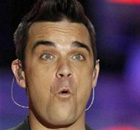-
-
MSNBC Marquee
Rihanna admits she prefers ‘high-risk’ men
One might think Rihanna would welcome a drama-free relationship after her romance with Chris Brown came to such an abrupt and violent end. But one would be wrong.
Theater & Arts
Arts survey finds drop in movie, museum attendance
(Agencies)
Updated: 2009-12-10 15:03
 |
|
Anna Netrebko, as the young singer Antonia, performs with Kate Lindsey, as Nicklausse, the Muse of Poetry, during a dress rehearsal for the Metropolitan Opera's production of 'Les Contes d'Hoffmann' (Tales of Hoffmann) in New York, Monday, Nov. 30, 2009.[Agencies] |
NEW YORK – If you haven't gone to a movie, jazz concert or an art exhibit in recent years, you are in steadily growing company.
A new study from the National Endowment for the Arts finds a notable decline in theater, museum and concert attendance and other "benchmark" cultural activities between 2002 and 2008 for adults 18 and older, and a sharper fall from 25 years ago. The drop was for virtually all art forms and for virtually all age groups and levels of education.
The NEA's senior deputy chair, Joan Shigekawa, listed a few possible reasons: The rise of the Internet; less free time; and cuts in arts classes.
"These numbers definitely represent a challenge," Shigekawa said.
Released Thursday, the NEA's 2008 Survey of Public Participation in the Arts is the sixth such report to come out since 1982, when 39 percent of adults attended a "benchmark arts activity" at least once in the previous year. The percentage peaked at 41 percent in 1992, just as the Internet was taking off, and dropped to 34.6 percent in 2008.
Between 2002 and 2008, percentages fell for moviegoing from 60 to 53.3, for jazz from 10.8 to 7.8, for museums/galleries from 26.5 to 22.7. Other categories with lower attendance include ballet, opera, musical and nonmusical theater, and art/crafts fairs and festivals.
The reading of "literature," defined as "plays/poetry/novels/short stories," was an exception, rising from 46.7 to 50.2, an increase NEA research director Sunil Iyengar credits, at least in part, to the growth of online reading. But the Internet did not stop a decline, from 56 percent to 54 percent, of reading of any kind that was not required by school or work.
Jesse Rosen, president and CEO of the League of American Orchestras, was concerned by the attendance numbers but encouraged by the substantial number of adults, estimated by the NEA at around 40 million, who watched or listened to classical music through electronic media, including online.
"There is a fundamental change happening in our lives. There's a sense that we have an old way of defining participating in the arts and that the public is redefining what participation means," Rosen said. "The challenge for us is to see where the public is and engage with them and adapt."
Rosen cited interactive concerts, multimedia concerts and shows of varying lengths, at different times of day.
"A lot of concerts remain absolutely essential, but it's not a contradiction to say that the public is showing an interest in new ways of engaging and that we need to a grow our bag of tricks," said Rosen, who will be among the arts representatives, from about 40 organizations, discussing the report Thursday morning in a live Webcast.
Also in the NEA report:
_Classic/rock oldies was the most popular form of music, with 48.1 percent of those surveyed saying they liked it. The runner-up was country/Western, at 36 percent.
_Mysteries were the favorite books, liked by 32.5 percent of respondents, followed by health/fitness/self-improvement and religious works.
_Visits to parks/monuments/historical buildings fell from 31.6 percent in 2002 to 24.9 percent last year.






